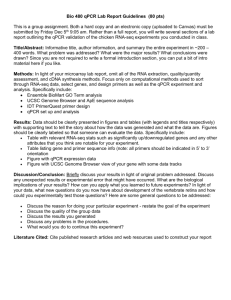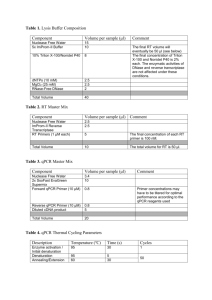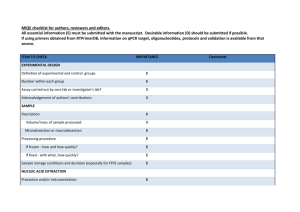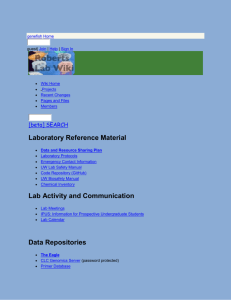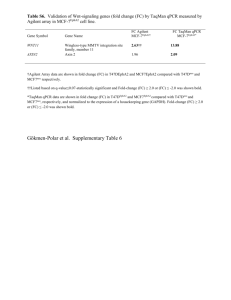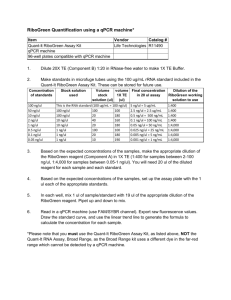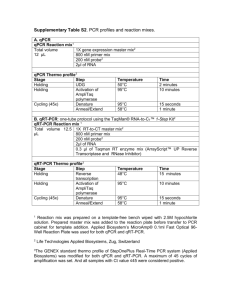Molecular methods for characterizing and measuring recreational
advertisement
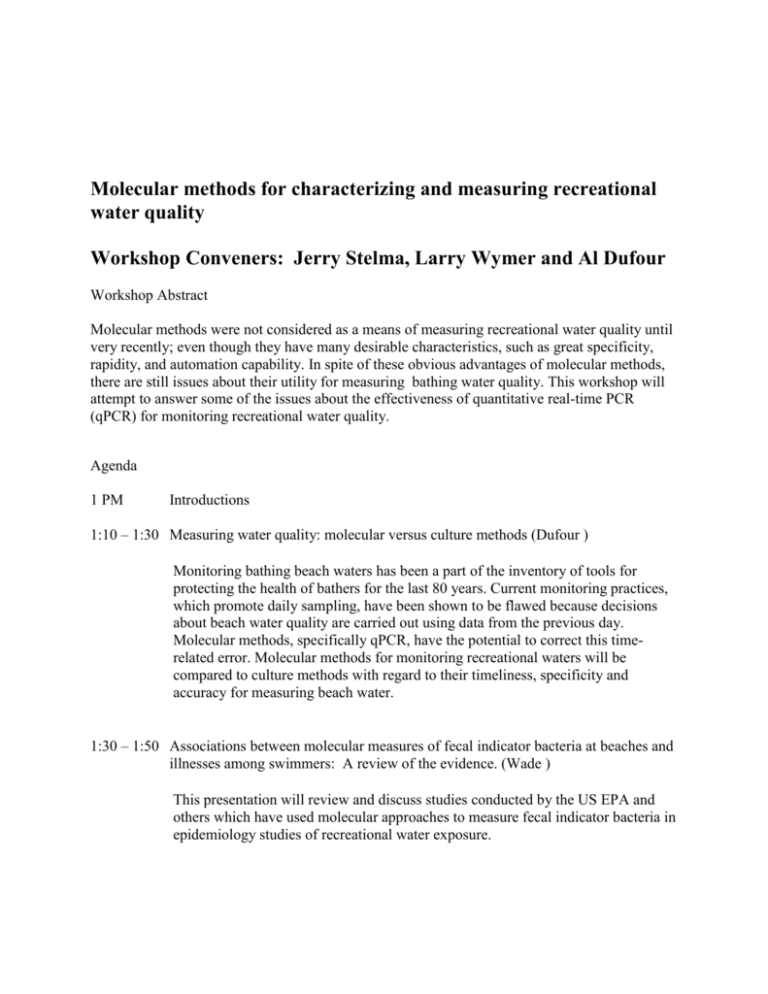
Molecular methods for characterizing and measuring recreational water quality Workshop Conveners: Jerry Stelma, Larry Wymer and Al Dufour Workshop Abstract Molecular methods were not considered as a means of measuring recreational water quality until very recently; even though they have many desirable characteristics, such as great specificity, rapidity, and automation capability. In spite of these obvious advantages of molecular methods, there are still issues about their utility for measuring bathing water quality. This workshop will attempt to answer some of the issues about the effectiveness of quantitative real-time PCR (qPCR) for monitoring recreational water quality. Agenda 1 PM Introductions 1:10 – 1:30 Measuring water quality: molecular versus culture methods (Dufour ) Monitoring bathing beach waters has been a part of the inventory of tools for protecting the health of bathers for the last 80 years. Current monitoring practices, which promote daily sampling, have been shown to be flawed because decisions about beach water quality are carried out using data from the previous day. Molecular methods, specifically qPCR, have the potential to correct this timerelated error. Molecular methods for monitoring recreational waters will be compared to culture methods with regard to their timeliness, specificity and accuracy for measuring beach water. 1:30 – 1:50 Associations between molecular measures of fecal indicator bacteria at beaches and illnesses among swimmers: A review of the evidence. (Wade ) This presentation will review and discuss studies conducted by the US EPA and others which have used molecular approaches to measure fecal indicator bacteria in epidemiology studies of recreational water exposure. 1:50 – 2:10 Water sampling and criteria-setting: qPCR vs. traditional methods (Wymer ) The EPA has collected a vast amount of amount of data over the past decade for characterizing variability of recreational water indicators at beaches using both traditional CFU as well as qPCR methods. The EMPACT study was designed specifically for the purpose of studying CFU variability. While following an epidemiological design, the NEEAR study utilized EMPACT study results for its water sampling scheme, and affords a side-by-side comparison of CFU and qPCR sampling characteristics. What do these tell us about the relative sampling characteristics of CFU vs. qPCR? What impact would this have on beach monitoring? And what basic changes to the beach monitoring philosophy might occur in order to capitalize on qPCR's rapid results and deliver same-day notification? 2:10 – 2:25 Break 2:25 – 2:45 Degradation of the qPCR Signal in Water and Wastewater Environments (Brenner) Current research at EPA examined the effect of the wastewater treatment processes on fecal indicator bacteria (FIB) and qPCR signals. In addition, the dieoff of the FIB and the degradation of the qPCR signal were determined in a series of laboratory holding studies of disinfected secondary effluents, natural Ohio River Samples, and simulated recreational water samples containing 5 % and 20 % wastewater. The results showed that qPCR signals were generally unaffected by the disinfection process and degraded more slowly than FIB concentrations through the wastewater treatment processes and during the laboratory holding studies. 2:45 – 3:05 Fecal source identification with qPCR ( Shanks) Current microbiological water quality monitoring methods do not discriminate among different animal sources of fecal pollution. qPCR represents a powerful tool for the identification and potential quantification of host-associated genetic markers. The concept of qPCR fecal source identification, as well as advantages, challenges, and applications of this technology will be discussed. 3:05 – 3:25 Performance and sources of uncertainty in the Enterococcus qPCR test method for recreational water quality (Haugland) The BEACH Act of 2000 directed the U.S. EPA to establish more expeditious methods for the detection of pathogen indicators in coastal waters, as well as new water quality criteria based on these methods. Progress has been made in developing a qPCR method for enterococci that meets the requirements for rapid, risk-based water quality assessments at beaches. Questions remain, however, on how the results of this method should be interpreted. These questions relate in part to the lack of a clear understanding of the performance characteristics of the method, such as detection limits and precision under the influence of mixed sources of variation. In the present study, single laboratory results are reported that further define these attributes. 3:30 – 5:00 Open panel discussion Notice: Although all of the work described above was reviewed by EPA and approved for presentation, it may not necessarily reflect official Agency policy.

